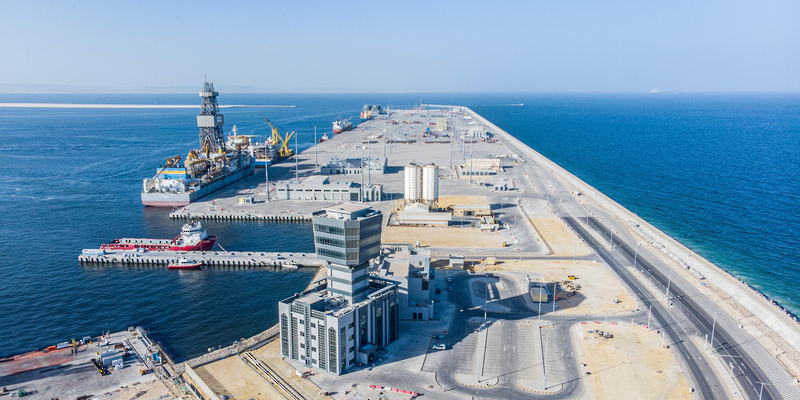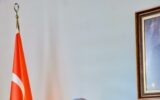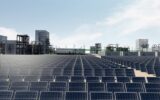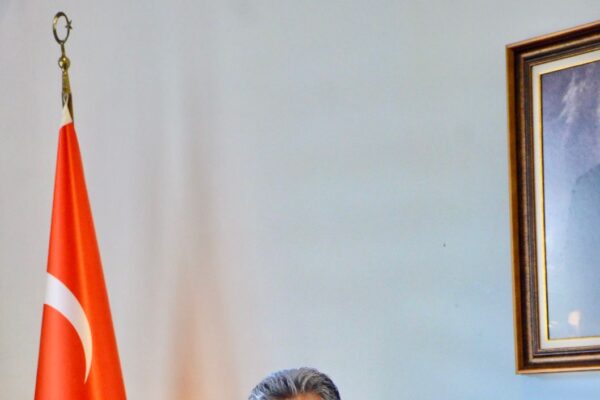
The Omani economy demonstrated commendable growth in 2025, a testament to its strategic pursuit of economic diversification, the augmentation of non-oil revenue streams, and the expansion of its productive economic base. These concerted efforts have collectively served to underpin the expansion of the Gross Domestic Product (GDP), attract heightened investment inflows, and invigorate the private sector.
The Tenth Five-Year Development Plan (2021-2025) delivered favourable results, thereby fortifying confidence in the nation’s trajectory towards comprehensive and balanced development. These outcomes have solidified the Sultanate of Oman’s steadfast commitment to its course of economic diversification and sustainable growth, a path underscored by the national economy’s persistent advancement and the amelioration of its key financial and economic indicators.
The Sultanate of Oman successfully enhanced its economic and fiscal performance while concurrently reducing its debt burden. The total public debt stood at approximately RO 14.1 billion by the conclusion of the second quarter of 2025, compared to roughly RO 14.4 billion recorded at the end of the corresponding period in 2024.
Cumulative public revenues accrued by the state until the end of the second quarter of 2025 reached nearly RO 5.839 billion. Conversely, total public expenditure amounted to approximately RO 6.098 billion, reflecting an increase of RO 292 million, or 5 percent, over the actual expenditure for the similar period in 2024. This augmentation is principally ascribed to a rise in developmental outlays relative to the same timeframe in 2024.
The trade balance for the Sultanate of Oman registered a surplus of RO 3.555 billion by the end of July 2025. This compares to a surplus of RO 5.432 billion witnessed during the same interval in 2024, representing a decline of 34.6 percent.
The Sultanate of Oman’s non-oil commodity exports exhibited robust growth of 11.3 percent, achieving a value of RO 3.890 billion by the end of July 2025, as opposed to RO 3.497 billion during the comparable period of 2024.
The Gross Domestic Product of the Sultanate of Oman, measured at current prices, experienced an increase of 0.6 percent in the second quarter of 2025. It attained a value of RO 10.171 billion at market prices, compared to RO 10.109 billion during the same quarter of 2024.
The credit rating agency Standard & Poor’s affirmed the Sultanate of Oman’s investment-grade credit rating at “BBB-” with a stable outlook. The agency cited the government’s adherence to fiscal discipline and its capacity to sustain economic stability notwithstanding volatilities in oil prices.
The agency further projected that real Gross Domestic Product growth would accelerate from 1.7 percent in 2024 to exceed 2 percent for the period spanning 2025-2028, an expansion buoyed by the growth of non-hydrocarbon sectors.
The cumulative volume of Foreign Direct Investment in the Sultanate of Oman reached about RO 30.279 billion by the end of the second quarter of 2025, accompanied by inflows totalling RO 3.434 billion.
The Special Economic Zones, Free Zones, and Industrial Cities located throughout the Sultanate of Oman’s governorates are commanding considerable investor interest. This coincides with an intensified focus on executing numerous projects within the enabling infrastructure sector, all aimed at attracting investments, refining regulatory frameworks, and promoting available investment opportunities.
The investment volume in the special economic zones, free zones, and industrial cities has doubled over the past five years, rising from RO 14.12 billion to reach RO 22 billion by mid-current year. Concurrently, the workforce within these zones and cities has expanded to approximately 80,000 male and female workers, among whom about 39 percent are Omani nationals.
Furthermore, 138 new investment contracts were signed with a total value of RO 1.049 billion. The industrial sector accounted for 97 percent of the total added investment volume in the first half of 2025. It is anticipated that the economic zones and free zones will witness qualitative projects in several sectors in the forthcoming period, such as mining, metal industries, and green hydrogen, particularly in the Special Economic Zone at Duqm, which stands as a promising hub for such ventures.
Throughout the first half of 2025, the Economic Zones, Free Zones, and Industrial Cities successfully secured new investment commitments exceeding RO 1.053 billion. The Sohar Free Zone led all zones in the volume of investments attracted, registering an additional RO 711.4 million. The Industrial Cities followed in second place with an investment volume of RO 175.2 million, and the Salalah Free Zone ranked third with RO 131.8 million.
The Special Economic Zones, Free Zones, and Industrial Cities are distinguished by a multitude of advantages and investment incentives, including exemptions from taxes and customs duties, permission for 100 percent foreign ownership, complemented by integrated one-stop-shop services and a suite of electronic services, most notably the facility for selecting land plots electronically.
Furthermore, the inflation rate in the Sultanate of Oman has stabilized at a moderate level, registering a notably low figure compared to the actual economic growth rate achieved during the Tenth Five-Year Development Plan 2021-2025. This stands as a significant accomplishment, demonstrating the Omani economy’s capacity for sustained growth and its ability to overcome challenges amidst the implementation of the objectives of “Oman Vision 2040” and the economic diversification strategy aimed at elevating growth rates, supporting the performance of various economic sectors, and propelling them towards expansion and increased value-added contribution to the national economy.
The average inflation rate from the beginning of the year until the end of the third quarter of 2025 was recorded at 0.80 percent. The Gross Domestic Product achieved a real growth of 2.3 percent during the first half of 2025 compared to the same period last year. The inflation rate in the Sultanate of Oman is projected to reach approximately 0.9 percent by the end of this year (2025) on an annual basis, according to estimates from the International Monetary Fund.
Projections indicate that the domestic economy will register a real growth of around 2.9 percent in 2025, with a likely acceleration to approximately 3.7 percent in 2026, supported by the continued momentum of non-oil sectors and the easing of oil production constraints.
















